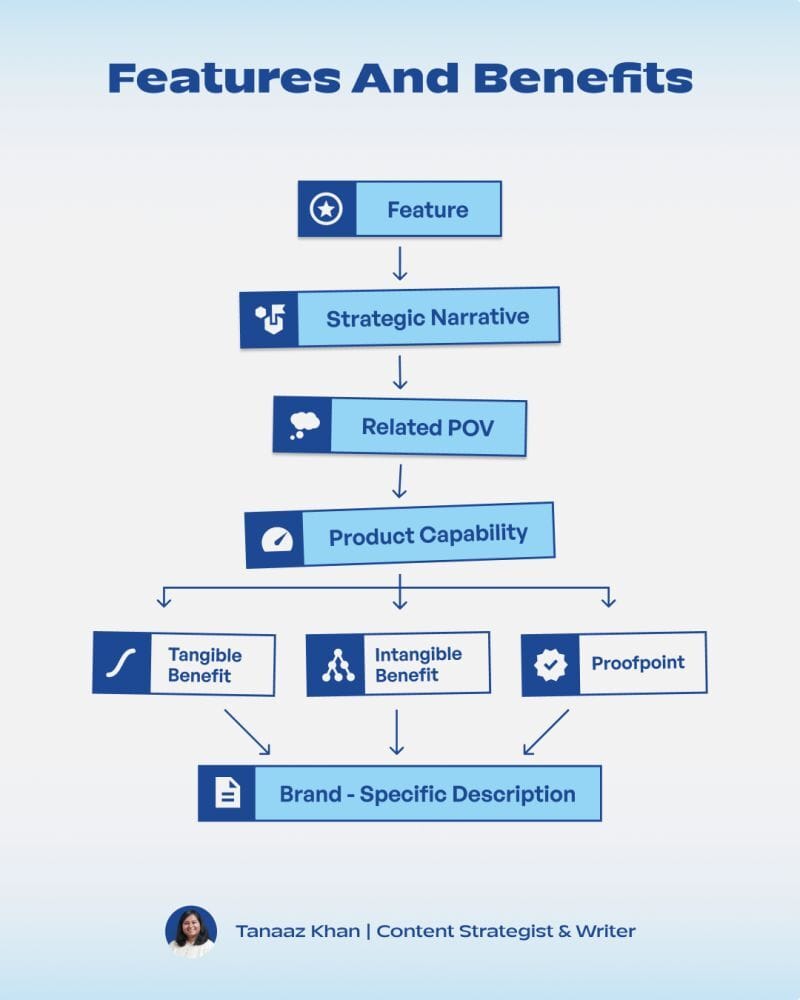- The Content Loop
- Posts
- ♾️ The red thread
♾️ The red thread
How to contextualize product features in your content

You’re reading The Content Loop — a 5-min read on how B2B SaaS marketers can use original research and product-led content as a growth lever.
Did someone forward this email to you?
In the past two years, I’ve written for two different sales enablement solutions. Both of them had similar features. Both targeted sales teams. Both promised to "simplify the sales process."
But every time I sat down to write about their product capabilities, I hit the same wall.
How do you make content about screen recording, email templates, or CRM integration feel different when your competitor offers the exact same thing?
I was constantly second-guessing myself. Does this sound too much like what I wrote for the other client? Am I just rehashing the same benefits with different branding?
That's when I realized the issue wasn't the features themselves—it was how I was thinking about them.
I was treating the product like the hero of the story. But the truth is that their audience was just looking to solve a specific problem—not buy a full-fledged solution for it.
Your product just gets them from point A to point B. That's it.
Here’s a framework I developed to make sure you don’t sound like every other competitor when you’re describing your product:

The FAB framework
Pick any feature your product offers. Let's say it's a screen recording feature.
Now, instead of jumping straight into "Our screen recording feature lets you record walkthrough videos" 🥱, step back and ask: what's the bigger picture here?
Because if you lead with features, you sound like every other SaaS company on the planet.
The differentiator is your strategic narrative.
Most content teams treat their strategic narrative like that expensive gym membership they never use. They know it exists, they paid good money for it, but somehow it never makes it into their actual content.
(Been there done that 🫠.)
Your strategic narrative isn't some abstract concept your brand team dreamed up during an offsite. It's your company's unique worldview. The specific way you think problems should be solved.
Now you can talk about how this specific capability enables your way of thinking about the problem.
Take Loom versus Tella. Both offer video recording, but their strategic narratives shape everything—and I mean everything.
Loom speaks to distributed teams drowning in meetings (we've all been there). Their narrative centers on async communication, so they position recording as a way to "communicate clearly without scheduling another call." The focus stays on time savings and meeting fatigue.
Tella targets creators concerned with production quality. Their narrative centers on democratizing content creation, so they position the same recording capability around "creating polished videos without production skills." The focus stays on quality and accessibility.
If both companies just talked about "screen recording," their content would be interchangeable. Boring. Forgettable.
But because they've connected their features to their strategic narrative, the same capability feels completely different.
Loom | Tella |
|---|---|
25% reduction in weekly meeting hours (tangible) | Professional-quality videos in under 10 minutes (tangible) |
Better work-life balance for remote teams" (intangible) | Confidence to share your expertise publicly (intangible) |
Used by 14M+ professionals worldwide (proof point) | Creators earning 6-figures using our platform (proof point) |
Using the FAB framework, you can explain each brand’s screen recording feature:
Record your screen to replace that 30-minute meeting with a 3-minute video—because your team's time is too valuable to waste on status updates.
Record your screen and create studio-quality content without a production team—because every creator deserves to look professional, regardless of budget.
Here's what you can do right now—and I mean before you close this email:
Pick one key feature your product offers. Write it down on a sticky note or something.
Now ask yourself: What's our brand's unique perspective on this industry's biggest challenge? How does this feature enable that perspective?
Don't just list what the feature does (that's what your competitors are doing). Explain why it matters within the context of your strategic narrative.
Your content will immediately feel less promotional and more purposeful. Less "buy our thing" and more "here's a better way to think about your world."
Because when you connect features to your brand's worldview, you're inviting people into a better way of thinking about their problems.
And that's when the real conversion happens.
P.S. Liked the issue? Share it with someone who could benefit from it.
That’s all for today!
As always, if you have any questions or feedback, hit “Reply” and let me know 😄
Reply